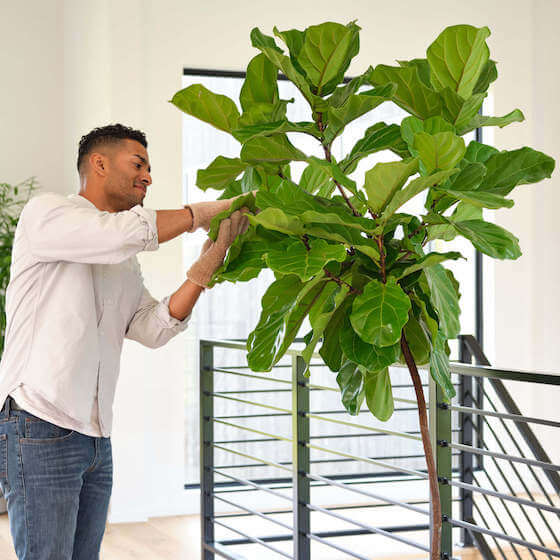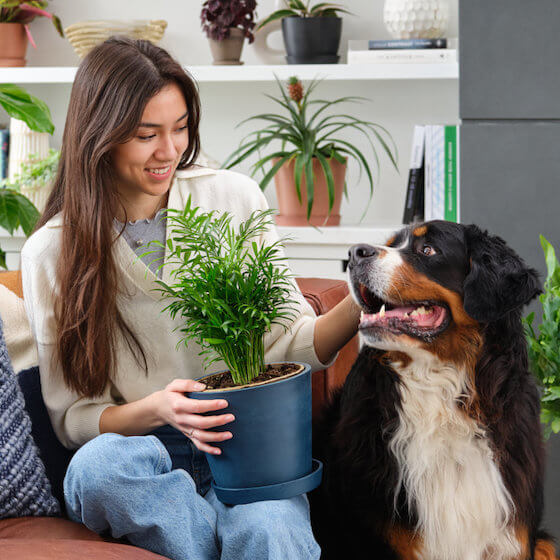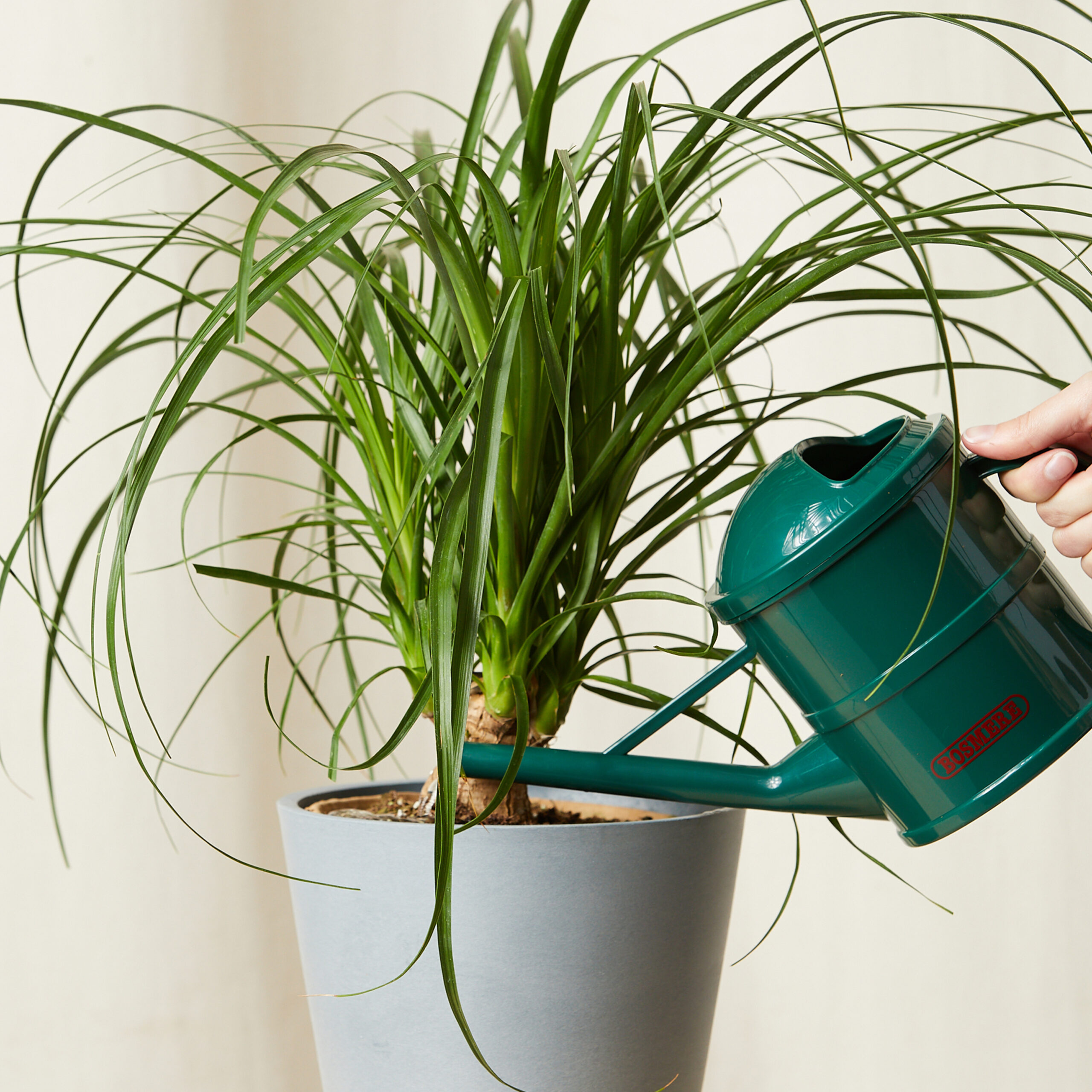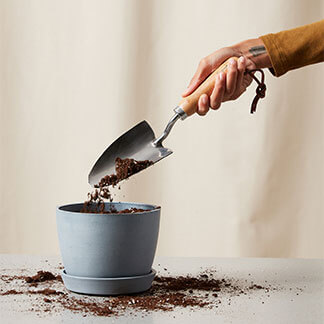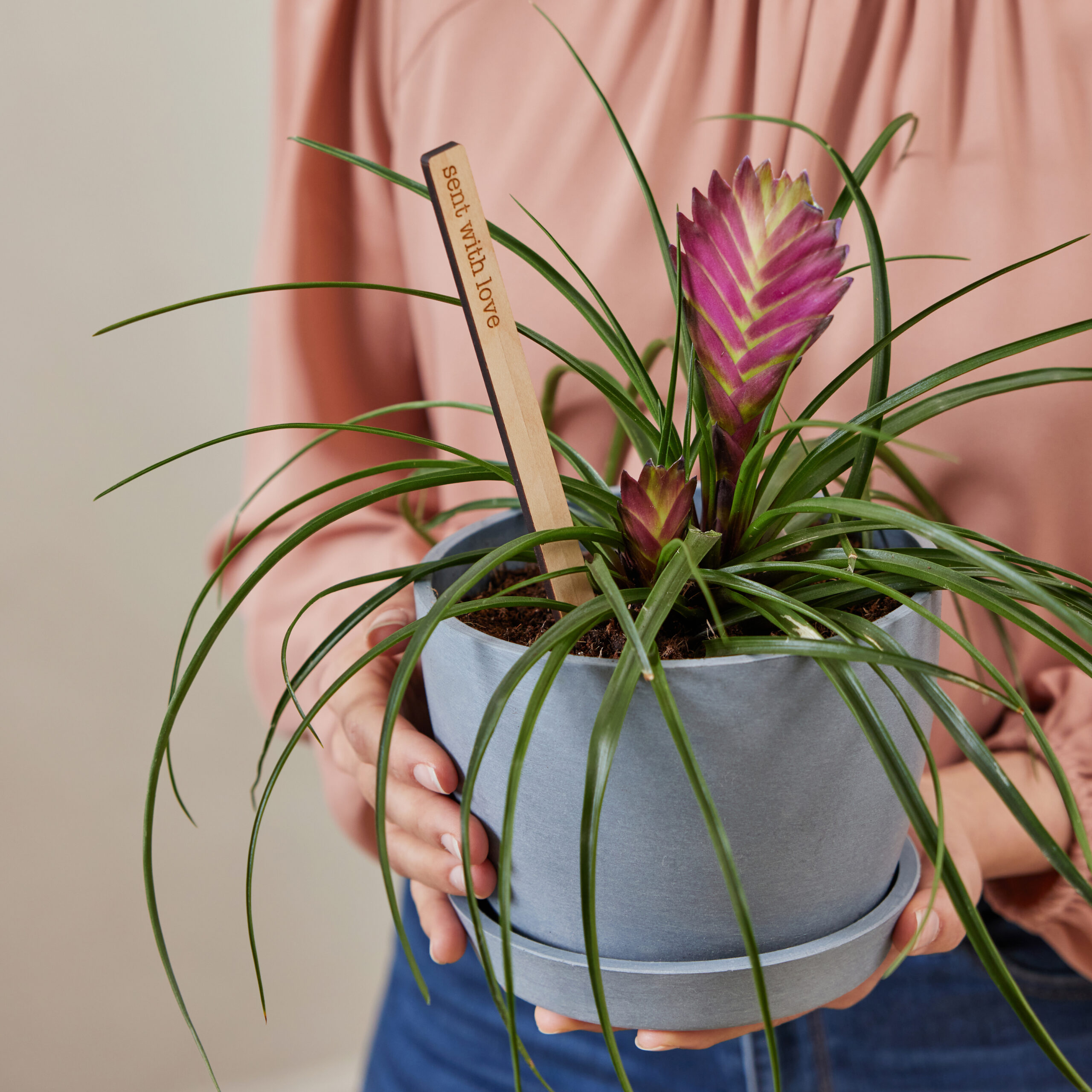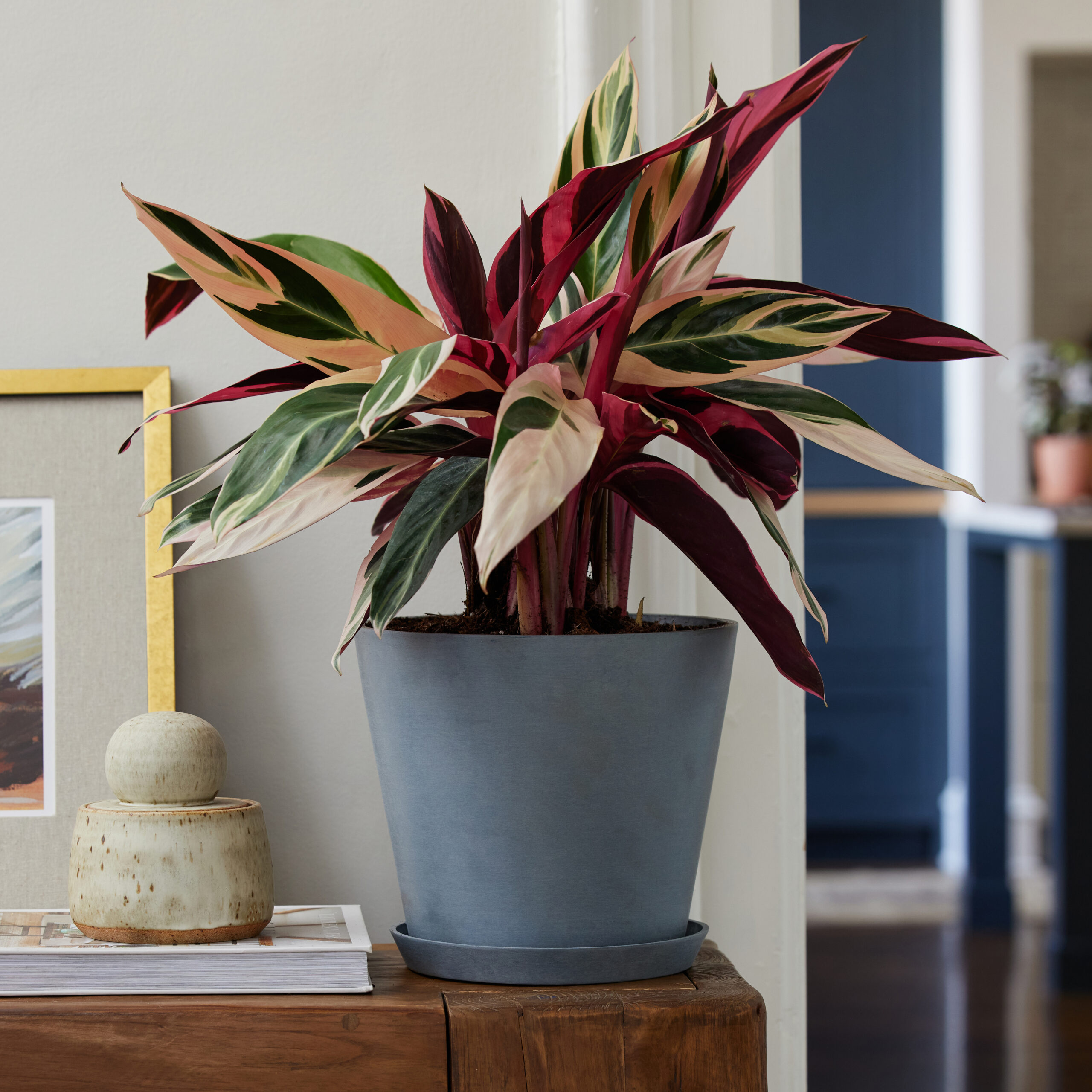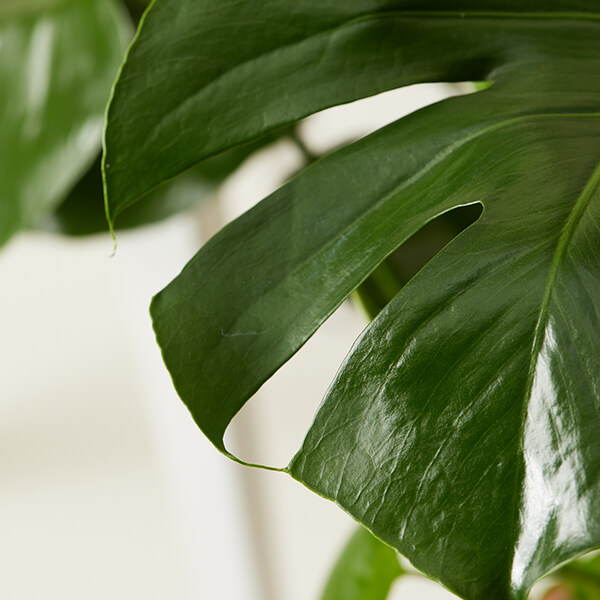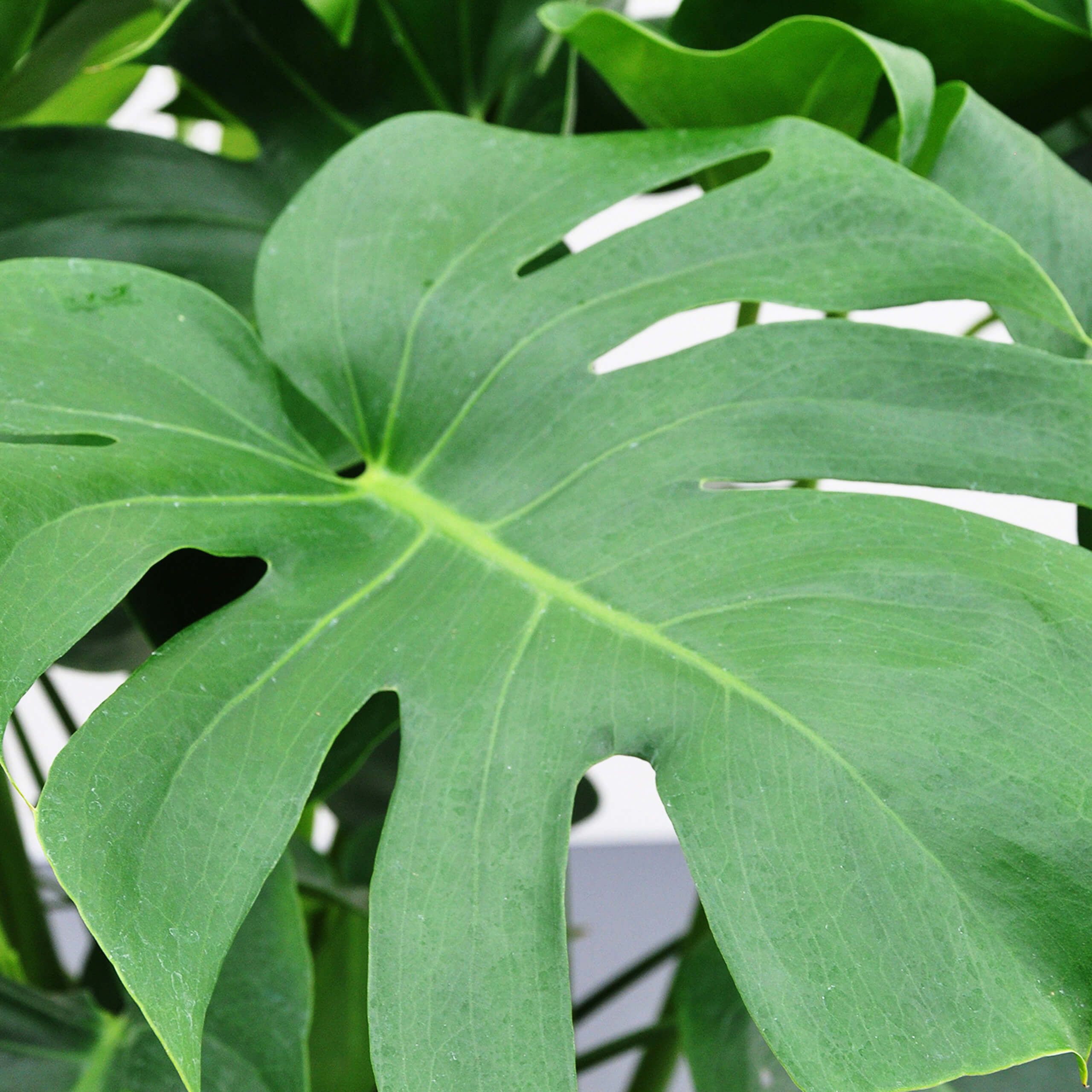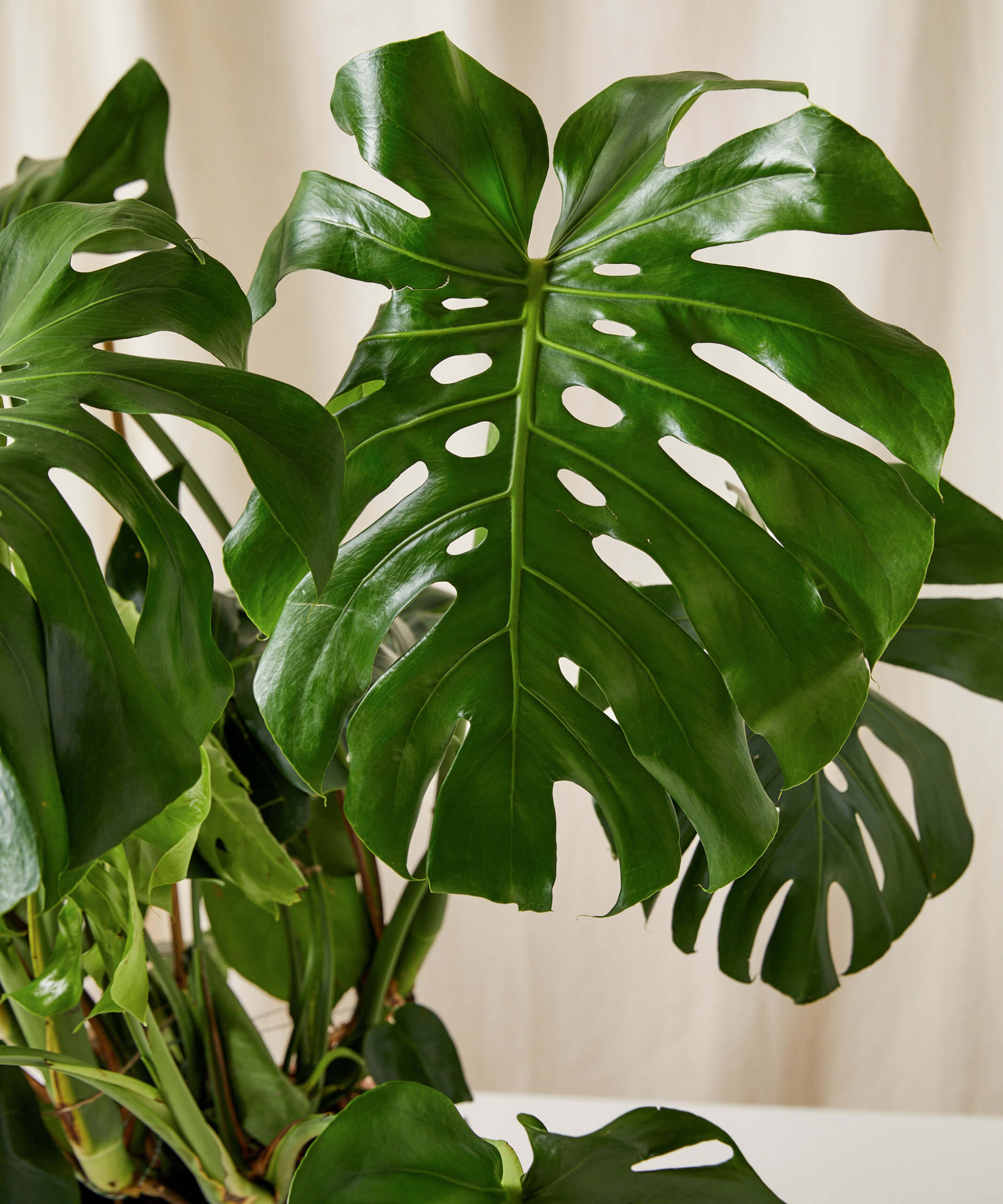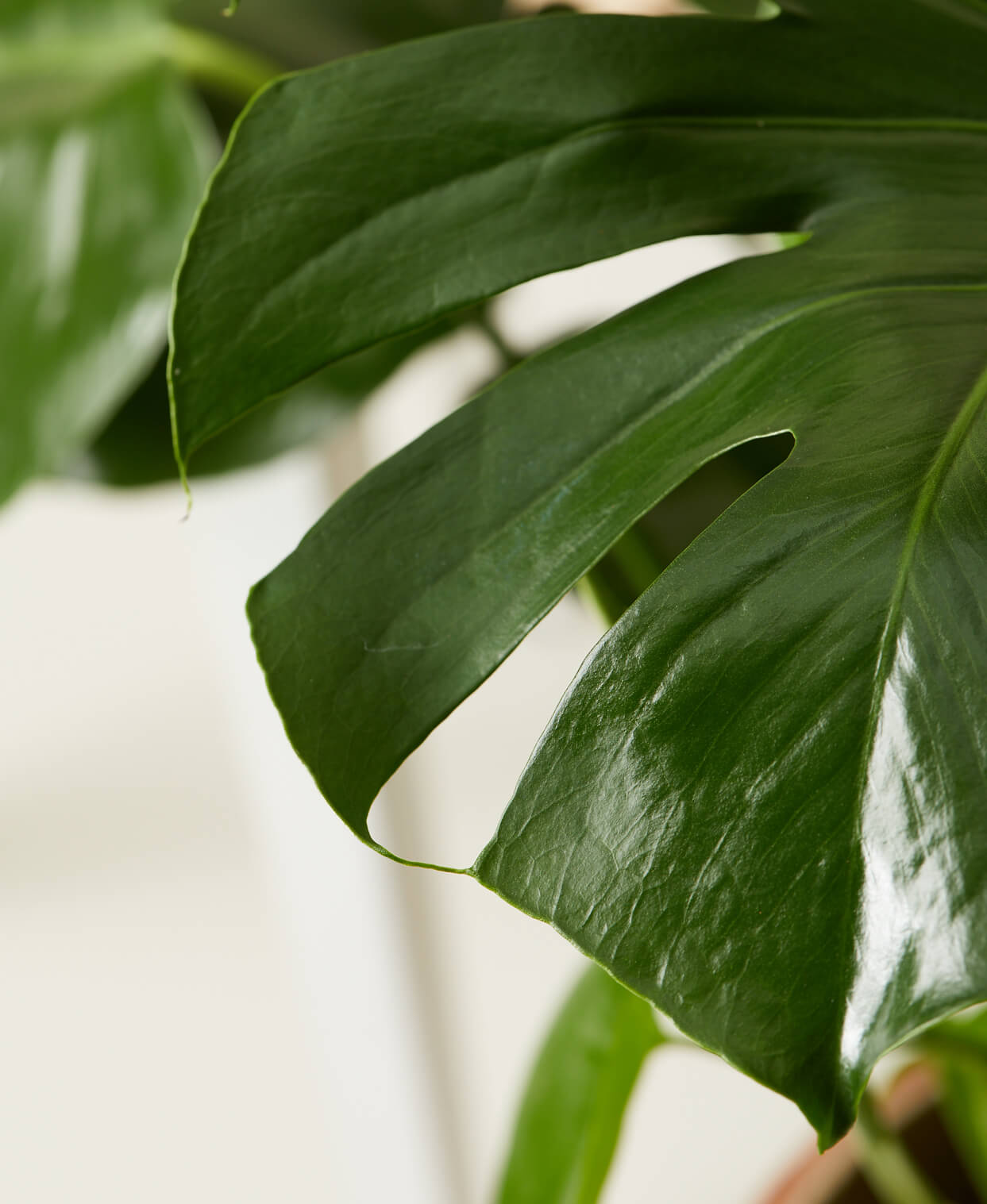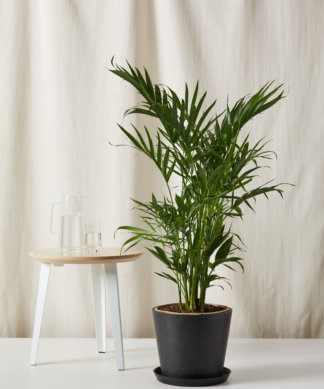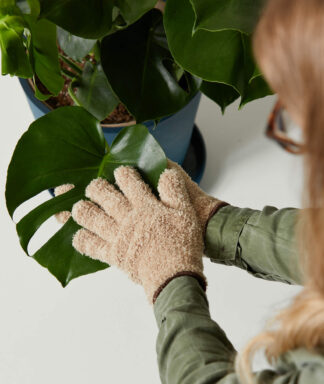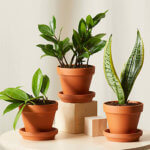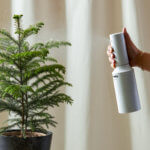How to care for your Monstera
Use these instructions to care for a Monstera. This guide will tell you how to water a Monstera; its light, temperature, humidity preferences and any additional care it might need to help it grow.
Monstera Adansonii
Your Monstera Adansonii prefers bright indirect light. It can survive in lower light conditions but growth may slow. Keep out of direct sunlight for extended periods, as it can burn the leaves. If you don’t have a location with ideal lighting for your Monstera Adansonii, use a Grow Light!
Water your Monstera Adansonii when the top 75% of soil is dry. Never allow your plant to sit in water or soggy soil, as this can lead to root rot and the eventual death of your plant.
Your Monstera Adansonii will do well in average household humidity, but will benefit from a boost in humidity. Mist the leaves regularly using a Mister, placing a humidifier nearby, or using a pebble tray are great ways to boost humidity for your plant.
Normal room temperatures between 60–80 degrees are great for your Monstera Adansonii. It will not tolerate temperatures under 55 degrees or sudden drops in temperature. Avoid cold drafts and direct airflow from heaters in the winter months.
From spring to the end of summer, feed your plant once a month with a general houseplant fertilizer diluted to half the recommended strength, such as our All Purpose Fertilizer (20-20-20).
Your Monstera Adansonii is moderately toxic to pets and humans and can cause swelling, vomiting, or burning. It is not pet-friendly.
These plants love to vine and climb. If you desire, you can train your Monstera Adansonii to climb up a stake or a wall. Do this by using garden ties or hooks to guide it where you would like. If your Monstera Adansonii is in need of a trim, clean up your plant using clean, sharp Plant Snips.
Monstera sp. ‘Peru’
Your Monstera Peru will perform best in bright to medium-bright indirect light. It can tolerate direct morning sun but avoid areas in which it will be exposed to harsh afternoon sun. It can also tolerate low light levels but will exhibit slower leggy growth.
Water your Monstera Peru when 50-75% of the soil volume is dry. Water thoroughly, and be sure to empty the saucer of any excess water to prevent root rot.
Your Monstera Peru does fine in an average household environment, but will not mind added humidity.
Your Monstera Peru prefers temperatures between 65-80°F. Avoid cold drafts and sudden temperature changes.
For best results, use a liquid houseplant fertilizer diluted to half the recommended strength once a month during the spring and summer. Never apply fertilizer to dry soil; always make sure the soil is damp before feeding your plant.
Your Monstera Peru is considered to be toxic to pets and humans if ingested.
These plants love to vine and climb. You can train your monstera to climb up a stake, moss pole, or a wall. Do this by using garden ties or hooks to guide it where you would like. This will also encourage larger leaf growth.
Monstera Dubia
Your Monstera Dubia can survive in low light conditions, but grows faster and produces more variegation in bright indirect light. The plant can only tolerate direct sun in the morning; extended periods of direct light can burn the foliage.
Water your Monstera Dubia when the soil is 50-75% dry. Water thoroughly until water comes out of the drainage holes, and be sure to empty the saucer of any excess water. This plant is sensitive to overwatering. If the soil remains constantly wet, the roots will rot.
Basic household humidity is fine for your Monstera Dubia, but higher humidity encourages larger leaves. Your plant will benefit from a pebble tray or adding a humidifier.
Your plant will grow well in temperatures between 65-80°F. Keep away from drafts, especially during the winter months.
Feed your Monstera Dubia monthly in the spring and summer with a general-purpose fertilizer. No fertilizer is needed in the fall and winter months when the plant is dormant. Always fertilize on moist soil, never dry as it can burn the roots.
This plant is toxic to pets and humans if ingested.
As your Monstera Dubia grows, you will need to add more wood planks or you can transfer it to a large moss pole. Doing so ensures the plant keeps its broad shingle-like appearance and encourages large leaf growth.
Monstera Standleyana Albo
Your Monstera Standleyana Albo can survive in low light conditions, but grows faster and produces more white variegation in bright indirect light. The plant can only tolerate some direct sun in the morning; extended periods of direct light can burn the foliage.
Water your Monstera Standleyana Albo when the soil is 50-75% dry. Water thoroughly until water comes out of the drainage holes, and be sure to empty the saucer of any excess water. This plant is sensitive to overwatering. If the soil remains constantly wet, the roots will rot.
Basic household humidity is fine for your Monstera Standleyana Albo but higher humidity encourages larger leaves. Your plant will benefit from a pebble tray or adding a humidifier.
Your Monstera Standleyana Albo will grow well in temperatures between 65-80°F. Keep away from drafts, especially during the winter months.
Feed your Monstera Standleyana Albo monthly in the spring and summer with a general-purpose fertilizer. No fertilizer is needed in the fall and winter months when the plant is dormant. Always fertilize on moist soil, never dry as it can burn the roots.
This plant is toxic to pets and humans if ingested.
Trim out any dead, discolored, or damaged leaves using clean, sharp scissors. As the plant ages, the older leaves will naturally turn yellow or brown and fall off. Your Monstera Standleyana Albo is a vining plant, so consider providing a trellis or moss pole for it to climb on.
Monstera
Your Monstera can grow just about anywhere in your home! It tolerates low light, but grows faster and becomes more dramatic in a spot with indirect bright light. That said, avoid strong, direct sunlight because it may burn the leaves. If you don’t have a location with ideal lighting for your Monstera, use a Grow Light.
Water your Monstera when the top 50–75% of the soil is dry. Water until liquid flows through the drainage hole at the bottom of the pot and discard any water that has accumulated in the saucer.
This plant will thrive in almost any environment, but if you want to give it a special treat, gently mist it once a week using a Mister. It’s best to mist your Monstera in the morning so the water has plenty of time to evaporate before evening.
Normal room temperatures between 60–80 degrees are great for your Monstera. It will not tolerate temperatures under 55 degrees or sudden drops in temperature. Avoid cold drafts and direct airflow from heaters in the winter months.
For best results, feed your plant once a month throughout the spring and summer, such as our All Purpose Fertilizer (20-20-20). A little bit of food will go a long way to encourage growth and root health. No fertilizer is necessary during the winter—it’s important to give your Monstera a chance to rest during the cooler time of year.
Monstera leaves are mildly toxic to pets and humans. Typically, ingestion will cause mouth and stomach irritation and possible vomiting.
Large leaves can collect dust. If you notice the leaves are dirty or dusty, wipe the leaves with Microfiber Dusting Gloves to keep them clean and healthy. In the wild, Monstera plants like to climb. To encourage your Monstera to climb upwards, you can stake wild offshoots with a dowel or use a moss pole. To trim your Monstera, be sure to use clean, sharp Plant Snips.
